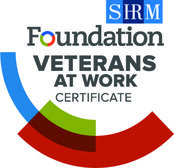Orange
With apologies to the Crossfit disciples, I’ve been seeing orange lately.
As anyone who enters their 40’s discovers, the body ain’t what it used to be! You suddenly give a lot more thought to whether your core is strong enough. Such is life. This past August, I decided to get off my ass and start doing something (versus the three years before where I said I was going to). Enter Orange Theory Fitness (OTF). I’ve spent countless hours on the treadmill listening to coaches encourage me to power walk/jog/run through their stages. It occurred to me that the stages very much align with business.
Base
Base in OTF is something that you can hold for 20 minutes without an issue. Essentially, your heart rate is up, but it’s doable without a ton of effort.
In business, this aligns with steady state. Let’s hope it is better than status quo, as you are constantly striving to improve. Your team knows what they are doing and is rocking it out. Ops is meeting the mission, BD is taking meetings, you are block and tackling and in general, everyone is in “just keep swimming” stage. It’s comfortable and it is where you start to think you’ve got this whole business thing down pat.
Things to remember during this stage:
- Too long here equals flatlined growth and decreasing margins
- Customer relations can get stale with the same old thing
- Employees can get bored
- Great for a new team to get comfortable with their responsibilities and interactions
- Watch your cash flow and your multiplier and make sure all are aligned
Too much time in this phase and nothing changes. Not enough time and you’ve got burnt out people.
Enter…The Push.
Push
Push is something at a pace that makes you uncomfortable. Your heart rate is elevated, you can only hold the push for 5 mins, maybe a bit more, but it will wear you out. It takes most or all of your focus.
A few recompetes are coming up, you’ve got a staffing shortage and your competition just beat you for a new contract. Perhaps the large integrators are sniffing around to buy the company, or they are pushing you on margins. Maybe you have a couple of new start programs with important customers that must transition well, and the incumbent isn’t making it easy.
Things to remember during this stage:
- The team is up for the challenge, but they need to know when it ends.
- Effective communication is critical. You will waste time in endless meetings or have a duplication of efforts without strong communication. Let your entire company know if folks are taxed.
- Most of these issues are something you could have predicted. Plan ahead for how you are going to handle them.
Everyone is working hard with long hours and a surplus of meetings, but they see the reward for their efforts.
That is, unless you find yourself in an All-Out after your push.
All Out
All outs push you physically and mentally. You are at your fastest and you leave nothing in the tank. You will need to pull from within to get through it. Most of the challenge is mental. You can keep this going for only 1-3 minutes.
In business, that may look like: entering a contract win that doubles the company or losing a contract for half your company. It could be two or three must win proposals hitting at the same time or several key personnel leaving at the same time. It might entail a complete pivot in offerings or a cash flow shortage. Speaking realistically, it could be a government shutdown. Are you sweating yet?
Things to remember during this stage:
- Your leadership team had better be the A team. If you’ve been letting anyone slide during the other phases, now is when you (and the rest of the team) will regret it. Think about this while you’re in the Base or Push phases.
- Keep your line of communication open with your customer, your banker and your lawyer. They can help ease the transition burden, fight where you need to legally and most importantly, supply the cash for the bumpy road.
- Break tasks into small milestones. Focus the team on the next gate to get it done. Don’t overwhelm everyone with the size of the task that is in front of you. Have small rewards for these accomplishments – even if it’s just better takeout in the war room.
- Be appreciative. Understand that this will make you and your team stronger on the other side. Reflect on what the added benefit is to your company and team.
When you’ve made it through the All Out, your team doesn’t immediately need to go to base, but rather, a rest and recovery phase.
Rest and Recovery
Immediately follows an All Out and allows you to catch your breath and focus on calming your heart rate. Some people need a lot of rest and recovery to bounce back. Others need just a bit before they get back to base. There is no one size fits all answer and your time in rest and recovery may vary depending on how you feel and how much effort you gave in your All Out.
Don’t jump back into base or assume that your team can go back to normal. Give your team and company time to recover.
Things to remember during this stage:
- Nothing feels better than a couple of days off without email and a bonus check for your efforts. Send your team away for a long weekend (away from each other!).
- Let your cash flow recover – make no major investments or outlay of cash.
- Don’t make any major changes. Just sit with the experience and reflect on lessons learned. You can change things after the rest and recovery.
Regardless of what stage you are in, keep moving forward. And keep that core strong!
In order to better prepare in the Base and Push phases, you’ll want to have a strong team at the ready. BOOST is connected to an array of great people and smart businesses that can help to get you where you need to be. Connect with us to help support your business by emailing [email protected].





